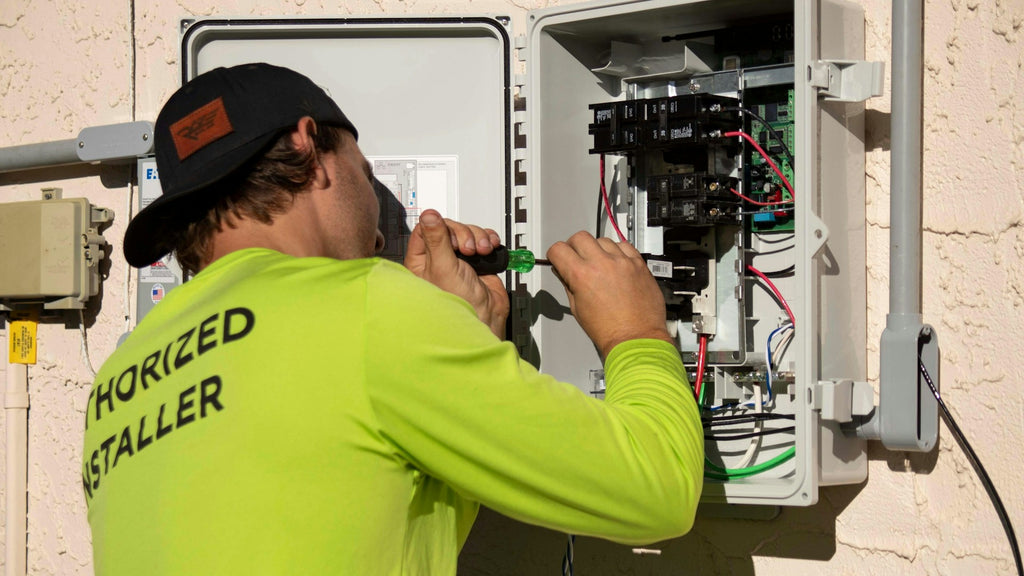Unlock the Secrets: Mastering Solar Inverter Troubles and Their Simple Solutions!
Solar inverters play a crucial role in renewable energy systems, acting as the backbone that converts the direct current (DC) generated by solar panels into alternating current (AC) that can be used by household appliances. However, like any piece of technology, they are not immune to failures. Inverter failures are surprisingly common, and understanding the potential issues can save you time, money, and frustration. This article aims to provide solutions to eight familiar solar inverter problems, helping you troubleshoot and maintain your solar energy system effectively.

Understanding Solar Inverter Failures
A solar inverter is a critical component in a solar energy system, ensuring that the electricity generated can be utilized efficiently. Unfortunately, inverter failures can occur for various reasons, including manufacturing defects, environmental factors, and improper installation. When an inverter fails, it can significantly impact energy production, leading to reduced efficiency and higher electricity costs. By recognizing the common causes of inverter failures, you can take proactive measures to avoid disruptions in your solar energy generation.
Common Solar Inverter Issues
1. No Power Output
One of the most alarming issues you may encounter is when your inverter shows no power output. This can manifest as a blank display or a failure to send energy to the grid. Common causes include loose connections, improper settings, or blown fuses. To troubleshoot, start by checking all electrical connections and ensuring the inverter is set to the correct mode. It's essential to address this promptly, as prolonged downtime can affect your overall energy savings.
2. Overheating
Overheating is another prevalent issue that can lead to inverter failures. Factors contributing to overheating include inadequate ventilation, high ambient temperatures, and dust accumulation. Ensuring your inverter has sufficient airflow and is installed in a shaded area can help mitigate this risk. Regular cleaning and maintenance are also vital to keep the inverter running smoothly and efficiently.
3. Error Codes
Most modern inverters are equipped with diagnostic features that display error codes when issues arise. These codes can vary by model, but they typically indicate specific problems such as grid disconnection or system faults. Familiarizing yourself with these codes can provide insights into the underlying issues. Refer to the user manual for troubleshooting steps associated with each code, as resolving these issues quickly can prevent further damage.
4. Low Performance
If you notice a dip in energy output, it may be due to low performance from your inverter. This can happen for several reasons, including shading from nearby trees, dirt accumulation on the solar panels, or even a malfunctioning inverter. Regularly inspecting your solar panels for obstructions and keeping them clean can help maintain optimal performance. Additionally, monitoring your energy production can help identify any persistent performance issues.
5. Inverter Not Turning On
When your inverter refuses to turn on, it can be frustrating. Possible reasons for this issue include tripped circuit breakers, internal faults, or issues with the solar panels themselves. Start by checking the circuit breakers and ensuring they are in the correct position. If everything appears normal, it may be time to consult a professional technician for a deeper inspection.
6. Frequent Disconnects
Frequent disconnects can severely hinder the efficiency of your solar system. This issue may arise from fluctuations in grid voltage, communication errors between the inverter and the solar panels, or even problems with the inverter itself. To address frequent disconnects, check the wiring and connections for any signs of wear or damage. Sometimes, a firmware update can also resolve communication issues.
7. Noise Issues
While some noise is normal during operation, unusual sounds can indicate problems. Humming, buzzing, or clicking noises may suggest internal component issues or loose parts. If you hear unexpected noises, it's best to turn off the inverter and inspect it for any visible damage. If the problem persists, seeking professional help is advisable to prevent further complications.
8. Damage from Weather Events
Extreme weather events like storms or hail can pose significant risks to your solar inverter. Damage can occur from flying debris or flooding, leading to performance issues or complete failure. To minimize this risk, consider installing protective barriers and ensuring your inverter is positioned in a sheltered area. Regular inspections after severe weather events can help catch any damage early and facilitate timely repairs.
Key Insights on Solar Inverter Maintenance
In conclusion, understanding common solar inverter failures and their solutions can make a significant difference in maintaining the efficiency of your solar energy system. Timely troubleshooting and regular maintenance are essential to ensure your inverter operates at peak performance. By applying the knowledge gained from this article, you can address issues proactively and enjoy the benefits of a reliable solar energy system for years to come.








